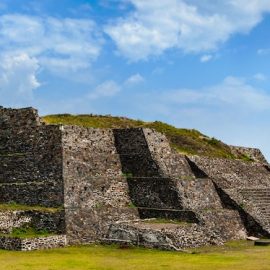

This article is an excerpt from the Shortform book guide to "A Brief History of Time" by Stephen Hawking. Shortform has the world's best summaries and analyses of books you should be reading.
Like this article? Sign up for a free trial here .
What is the theory of relativity? What phenomena does the theory attempt to explain? How has it revolutionized our understanding of the workings of our universe?
Within Einstein’s theory of relativity, there are actually two theories: special theory and general theory. The former applies to all physical phenomena discounting gravity, and the latter explains the gravitational force in relation to the other forces of the universe.
Learn about Albert Einstein’s theory of relativity, explained in simple terms.
Albert Einstein’s Theory of Relativity
Einstein’s theory of relativity greatly enhanced understanding of the interplay between the speed of light and the passage of time. But it was still missing a crucial element—gravity. Gravitational effects ought to be immediate, meaning that gravity travels at infinite velocity (it shouldn’t take time for gravity to exert its effects). But how could this square with the idea that nothing could travel faster than the speed of light?
Proposed in 1916, Einstein’s general theory of relativity explained that gravity was a special force that existed because of the curvature of space-time itself. Space-time, according to this theory, is not flat. Thus, orbiting bodies travel in geodesics—the shortest distance between two points. This is the nearest thing to a straight line. Thus, the Earth actually follows a linear path through four-dimensional space-time, but it appears to us to be an elliptical orbit.
The mass and energy of bodies like the sun actually curve the fabric of space-time itself, creating slight variations in the “elliptical” orbits, variations that couldn’t be fully explained by Newton’s theory. It is analogous to placing an object on a stretched-out piece of fabric. The weight of this object will cause the fabric to sink—this is the same mechanism by which gravity warps the curvature of space-time.
The test of a good theory is if it describes observed reality and makes reliable and accurate predictions about the future. By these standards, general relativity is a good theory—it successfully predicts these deviations in orbits, bolstering our faith in the theory.
Even light itself is impacted by the curvature of space-time. Light from distant stars appears to us in a different position than it actually originated from, because the gravitational mass of the sun reflects the angle of the light.
Gravity and Time
Because we know that time is relative, it would also follow from general relativity that time would move at different speeds at different points in space. Because of the differing strength of a body’s gravitational pull at different points in space-time and the effect this has on light-wave frequencies, events on Earth would appear to be taking a longer time to happen to an observer at the top of the mountain—time would be moving quicker on the mountain, because light from Earth would be reaching it at a lower frequency.
This has actually been tested: clocks have been shown to run slower at higher altitudes than lower ones, as general relativity predicts they would. The main takeaway? Everything is relative. Bodies moving through space-time affect the curvature of space-time itself, which, in turn, affects the movement of those bodies. Nothing is static or absolute.
The Big Bang and Relativity
Does the general relativity require a Big Bang event? The British mathematician and physicist Roger Penrose sought to answer this in 1965. Reasoning from general relativity and the principle that gravity is always attractive, Penrose theorized that when a star died and collapsed under the weight of its own massive gravity, it would be compressed to a space of zero surface and volume. This would be a singularity—a point in space-time of infinite density and curvature, much like conditions before the Big Bang. This singularity is called a black hole (we’ll be talking much more about them in the next chapter). According to Penrose’s theory, any body undergoing gravitational collapse must produce a singularity.The great insight of Stephen Hawking, a colleague of Penrose’s, was to put Penrose’s theorem in reverse: If all stars ended up as singularities when they collapsed, then an expanding universe must have begun with a singularity. In 1970, Hawking and Penrose jointly published a paper proving that general relativity necessitated the occurrence of a Big Bang event.

———End of Preview———
Like what you just read? Read the rest of the world's best book summary and analysis of Stephen Hawking's "A Brief History of Time" at Shortform .
Here's what you'll find in our full A Brief History of Time summary :
- The search for a theory that explains the history and evolution of our universe
- Stephen Hawking's discussions about time, space, dimensions, and quantum theory
- How time travel would theoretically work






